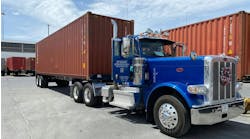Surveys recently conducted by GE Capital Fleet Services (GECFS) determined that achieving costs savings – whether from reducing maintenance expenses or improved management of vehicle life cycle costs – remains a significant driver of current fleet management strategy.
For example, 46% of a select group of fleet managers polled by GECFS during the 2012 NAFA Institute & Expo in St. Louis said cost savings are the primary focus of executive management as it relates to their company’s fleet operations, with on-time delivery/service and driver safety/resource tied at a very distant second at 15%.
When asked to rank their greatest concerns for 2012, GECFS said 26% of fleet managers in its poll placed meeting their organizations’ cost-savings goals at the top of the list, an increase of 3% since last year’s survey, followed by driver safety (23%) and workforce productivity (19%).
“Fleet managers find themselves under a lot of pressure across the board, especially when it comes to controlling maintenance costs,” Eric Strom, maintenance and safety product manager with GECFS, told Fleet Owner. “The cost of engine oil, tires, and other components are all rising while vehicle technology itself is increasing in complexity. That’s adding to the challenges.”
Steve Jastrow, manager of strategic consulting services for GECFS, pointed to another recent survey the company conducted on car maintenance trends, which mirror similar trends occurring in the light-duty truck field:
- Stabilizing maintenance expenses through extended intervals. For example, while the cost of oil changes increased 6% (or $2) in 2011 versus 2010, oil change intervals are being lengthened so the overall cost of oil changes is going down. “We’re talking about intervals being moved out 5,000 to 10,000 miles on average,” he said.
- Decreased average tire expense. Although the cost per tire increased 5% in the car market, replacement tire costs declined for the second straight year. This is due to the large amount of vehicle replacements that occurred in 2010, which reduced the need for additional new tires in 2011, Jastrow noted.
- Improvement in overall vehicle quality. Overall vehicle quality continued to improve across the industry, resulting in longer lasting parts and less frequent maintenance requirements. However, Jastrow said vehicle OEMs – for cars and light trucks alike – are now becoming far stricter concerning scheduled maintenance requirements, especially in terms of maintaining warranty coverage.
Again, though GECFS’ Strom stressed that the firm’s car maintenance survey results do not transfer directly to what’s occurring in the light truck space, the downward trend in maintenance costs in 2011 is also illustrative of fleet efforts to return to “regular” vehicle replacement cycles, which in-turn decreases the average cost of repairs per vehicle.
GECFS’ car study, based on a survey of actual maintenance expenses incurred by more than 13,300 passenger cars from January 1 to December 31, 2011, found that average car maintenance costs fell 4%, from $55.89 to $53.49 per vehicle per month.
“During the ‘Great Recession’ fleets held onto their vehicles longer, thus incurring much higher ‘end of life’ maintenance costs,” he explained. “Returning to a more ‘regular’ vehicle replacement cycle is eliminating those costs and lowering average vehicle life cycle expense.”
Indeed, the company found it in its NAFA fleet management survey that only 7% of respondents do not have plans to pursue a vehicle replacement program during the next 12 months, while 38% are using some sort of analytical tool to identify ways to improve operational efficiencies, with 24% using such tools to assist with purchasing decisions.
“Whether identifying ways to reduce maintenance spend or fine-tune vehicle replacement strategies, we continue to experience a high demand from customers on how best to optimize their fleets and drive out cost,” stressed Mark Hayes, GECFS’ chief marketing officer.



